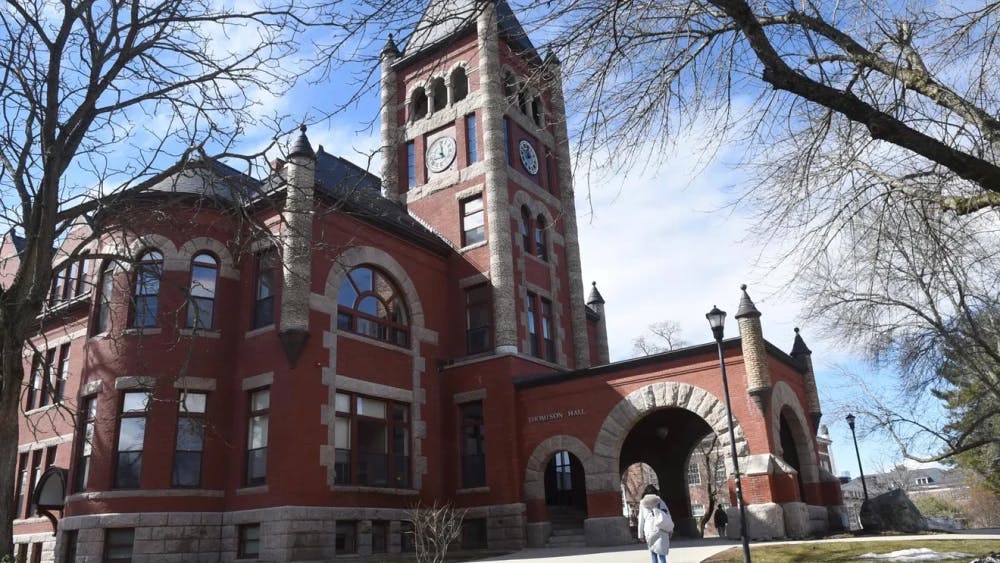
The UNH anthropology department hosted the third annual Open Archaeology Day at Huddleston Hall on Friday, April 22. Students, faculty, children and parents of the Durham community came together to learn about flint knapping, tossing an atlatl (spear-thrower) and how to practice excavation.
The event provided an opportunity to those interested in the fields of anthropology and archaeology to take part in such ancient practices.
Two members of the anthropology department, lecturer Marieka Brouwer-Burg and associate professor Meghan Howey, helped to coordinate the event.
“For the first time ever we have an anthropology club,” Howey said. “So they’re heavily involved too, and now there’s a huge student involvement.”
Last month, UNH introduced its first ever anthropology club, led by President Madeline Moison.
In attendance at the event was George Leduc, a representative from the New Hampshire Archaeology Society, who taught those interested about flint knapping, which is the old age manner of making arrowheads and edge stone tools.
“You want to hit 1/4 of an inch into the material, you want to really snap,” Leduc while explaining the special technique. “It’s like playing golf, you practice your swings.”
The atlatl toss was another interactive activity at the event. An atlatl is a tool that leverages spears to enable greater velocity and was typically used for hunting. Invented about 400,000 years ago, the atlatl was used by Homo heidelbergensis, an extinct species from Africa. Atlatl throwing has since evolved, becoming a sport offered by some colleges.
UNH alum Jason Allard was running the atlatl throwing station. “There are competitions, people do it as a sport, but originally it was a hunting tool,” he said. “Once people started moving out into the plains, they needed some more reach, and these are good for thin skinned game, deer, and birds.”
An excavation digging station was also present at the event. Participants analyzed soil, searched for artifacts, measured and labeled their findings and observations. Among the types of soil included in the mock dig station were Minoan Chinese, Anasazi, Southwest Anasazi, Babylon, Phoenician and Indus soils.
The event’s food options provided an accurate look at the eating habits of the past. The menu varied from salmon jerky to early-domesticated grains, along with some simple cheese.
Veteran and UNH senior Douglas Rodoski expressed his passion for anthropology and archaeology.
“As an anthropology minor, I have had very interesting classes with Professor Brouwer-Burg, Dr. Howey, and Professor [Sara] Withers. These included On Campus Archaeology, where we performed excavations of the old UNH train station,” Rodoski said. “I encourage all students to inquire about not just archaeology, but all the anthropology courses here at UNH.”













